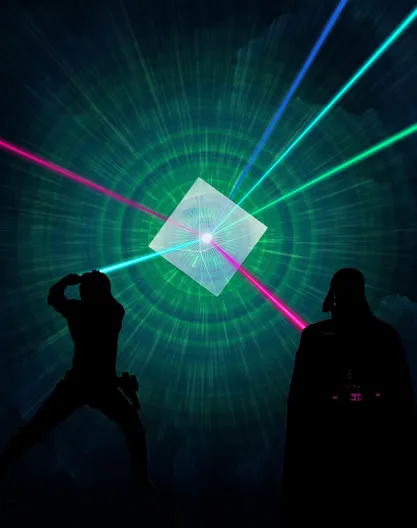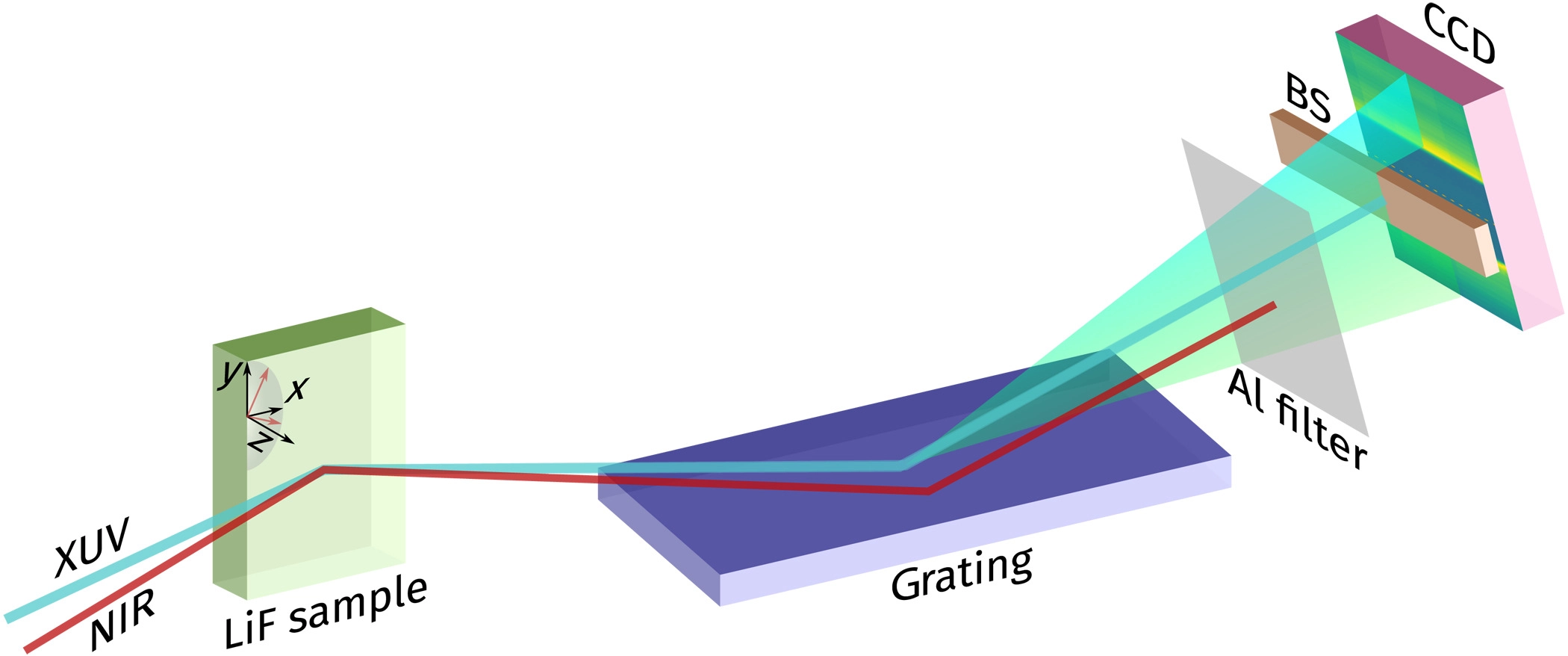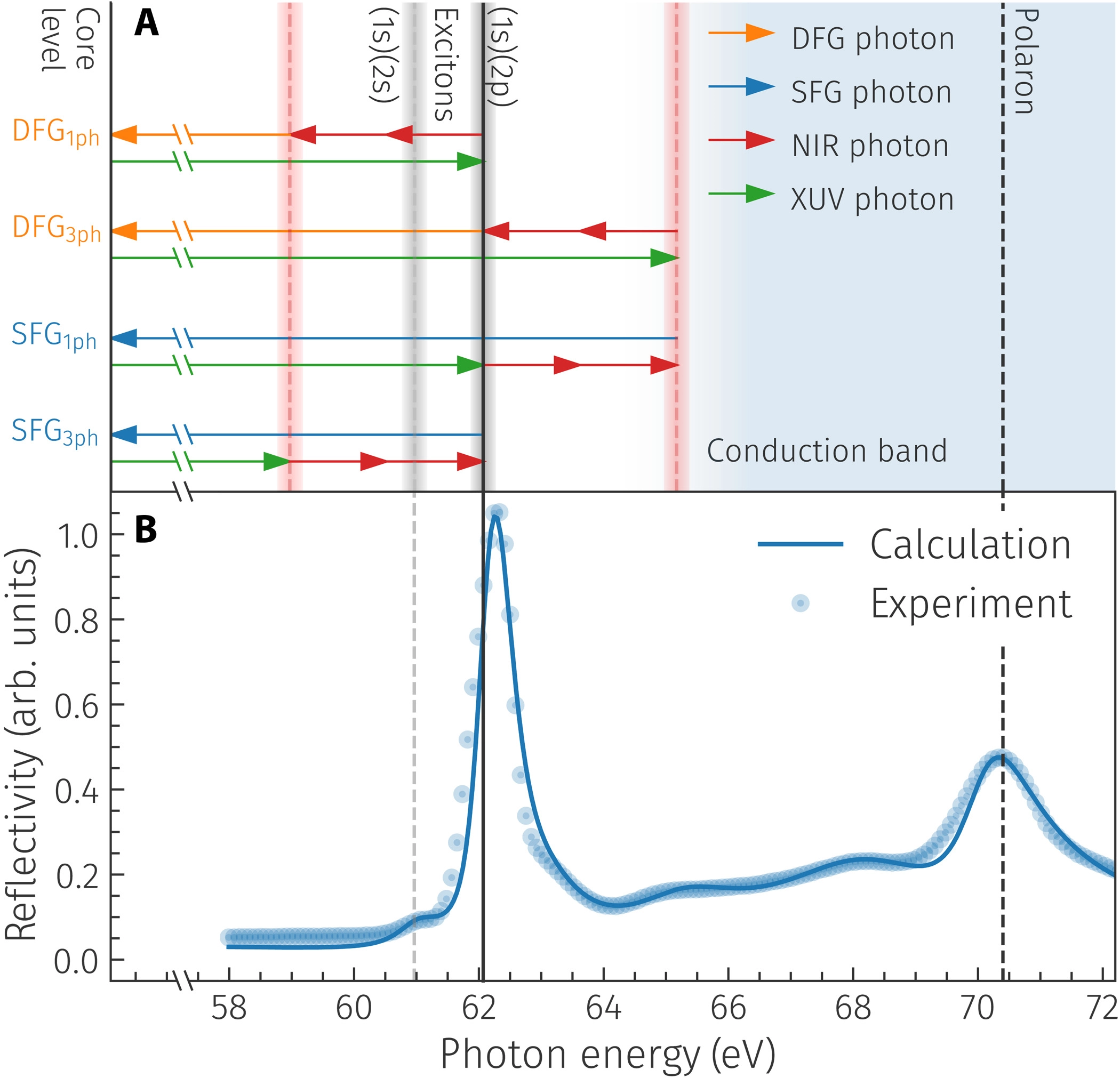Unlike fictional laser swords, real laser beams do not interact when crossed - unless they meet in a suitable material that allows nonlinear light matter interactions In this case, mixing can produce a beam with changing color and direction

The mixing process between different beams is a cornerstone in the field of nonlinear optics, which has been firmly established since the wide use of laser. In a suitable material (such as some crystals), two lasers can "feel each other's presence". In this process, energy and momentum can be exchanged, resulting in additional laser beams in different directions and frequencies from the interaction region, which are regarded as different colors in the visible spectrum. These effects are usually used to design and implement new laser sources.
It is also important to analyze the light beam in the mixing phenomenon, which can deeply understand the properties of the material in the mixing process. This mixing based spectroscopy enables researchers to understand the complexity of the electronic structure of the sample and how light excites and interacts with the material. However, so far, these methods have hardly been used outside the visible or infrared spectrum.

A research team from the Max Born Institute (MBI) in Berlin and the German electron synchrotron (desy) in Hamburg has now observed A new mixing process involving soft X-rays is introduced. Overlapping ultrashort pulses of soft X-ray and infrared radiation in lithium fluoride (LIF) single crystal, they see how the energy of two infrared photons is transferred to or from X-ray photons, and change the "color" of X-ray in a so-called third-order nonlinear process. They not only observed this special process with X-rays for the first time, but also plotted its efficiency in changing the color of incoming X-rays.
It turns out that the mixing signal can be detected only when this process involves an inner shell electron from a lithium atom being lifted to a state in which the electron is tightly bound to the vacancy it leaves - a state called exciton. In addition, the comparison with the theory shows that the other "optically forbidden" transitions of an inner shell electron contribute to the mixing process.

Through the analysis of this resonant four wave mixing (FWM) process, the researchers obtained a detailed picture of the travel of optically excited electrons in their very short lifetime. Robin Engel, a doctoral student involved in the work, said: "we can observe the four wave mixing signal only when the excited electron is located near the cavity it leaves behind, and because we use a specific color of X-ray, we know that the cavity is very close to the nucleus of lithium atom."
Because X-rays can selectively excite inner shell electrons of different atomic types in materials, the method shown allows researchers to track the movement of electrons after being stimulated by ultrafast laser pulses in molecules or solids. Specifically, such a process - electrons moving to different atoms after being excited by light - is a key step in applications such as photochemical reaction or light collection, such as power generation through photovoltaic or direct solar fuel.
"Because our mixed wave spectroscopy method can be extended to the higher photon energy of X-ray lasers, many different atoms in the periodic table can be selectively excited. In this way, we expect it to be possible to track the instantaneous existence of electrons on many different atoms in more complex materials, so as to have a new understanding of these important processes," explained Daniel Schick, a researcher at MBI.